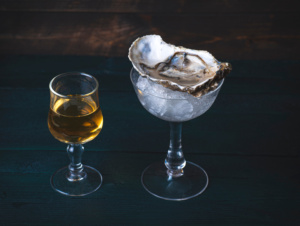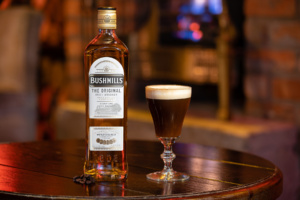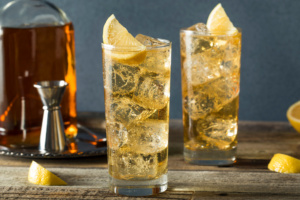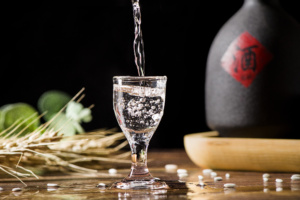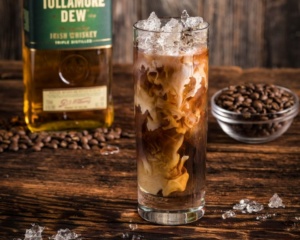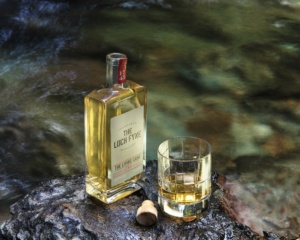Whisky Made Simple: Jargon Buster
Listen to some whisky connoisseurs, or read books written by a number of so-called experts, and you’d be forgiven for concluding you needed a degree in rocket science and a diploma in hospitality to make any sense of it all.
Actually though, when you cut to it, whisky is a simple drink made unnecessarily complicated by people who have wrapped it in verbal finery and are not the best at communicating their subject matter to the vast number of potential new drinkers.
Whisky is in fact very simple. It’s a spirit made with just grain, yeast and water. And, while you can tweak and stretch it from that base line and embellish and develop it in to new and exciting oral shapes, the bottom line remains the same: whisky is distilled beer, which in-turn is fermented grain juice.
So, we thought it would be a good idea to simplify whisky and explain some of the jargon it attracts. In this blog post, we’ll be looking at different barrels and casks, different types of oak, what chill filtering, cask strength, and ABV all mean, how some whiskies get their smoky flavour, and what peat actually is.
We’re going to start with the whisky styles of Scotland!
Scotland's Whisky Styles
Most people have heard of single malt whisky and blended whisky, but Scotland produces four styles of whisky. Contrary to popular belief, no category is better or worse than any other, and there are reasons to favour any one of them. It’s a case of horses for courses. So what are they?
Single malt whisky: Single malt whisky is the spirit world’s crown jewel, and the reason that across the world whisky clubs are formed and thousands of enthusiasts meet for tastings or swap postings on line.
It is a whisky made from just malted barley - barley that has been tricked into growing by water and stopped from growing with heat before being made into a flour, converted into beer, and then distilled, at which point the alcohol is separated from water. That spirit must then be matured - in Europe for no less than three years - to become single malt whisky.
The important point to remember here is that the word ‘single’ does not mean the whisky is produced by one cask. It means that he whisky comes from one distillery.
It is possible that it does come from just one cask, and in that case it will be known as a single cask whisky. Normally, though, the whisky is made by bring together whiskies from casks of different size and age, made of different types of oaks, and having been previously used for different other spirits or fortified wines. In this respect a singe malt is put together in a very similar way to a blended whisky.
If a bottle of whisky carries a name such as Glenlivet, Laphroaig, or Talisker, then it is a single malt whisky from that distillery, and it will contain only malts from that one distillery.
Grain whisky: Grain whiskies are becoming increasingly popular in their own right and can be very good indeed, offering the consumer a sweet, toffee-d and vanilla flavour. Most grain whisky, however, is used for blended whiskies (see below).
Grain whisky is different to single malt whisky because it is made with grains other than barley, and it is produced by a column still system. Single malt whisky is made in batches. You start with flour, make beer, distil it in a pot still, and then start again. Grain whisky is made in tall column stills, also known as continuous stills, and the process is very different.
Under the column still method a soggy fermented grain mash is forced against steam, under pressure, and at very high temperature, so that the alcohol is extracted from it. It condenses into liquid through a complicated condenser system and is collected. The alcohol is at a much higher strength than the spirit made in a pot still, and it has less flavour than spirit produced in a pot still.
It is then matured in oak casks in the same way a single malt whisky is, and under the same rules with regard to length of maturation.
Blended whisky: Blended whisky is what Scotland is famous for. About nine out of 10 glasses of whisky poured contain blended Scotch.
A blended whisky is a combination of malts from a number of different distilleries, mixed with grain whisky. It is not unknown for 40 or 45 different malts to be used in a blend, though nowadays the number is likely to be closer to 20.
What each blend contains is kept secret, and as malts come and go, the exact recipe is often tweaked. The rail of grain to single malts is rarely divested either, but the single malt content is much higher in better quality blends.
People often make the mistake of concluding that single malts are better than blends. This is not always the case, and at their most premium, blended whiskies are every bit as good as single malt whiskies.
Blended malt whisky: Once known as ‘vatted malt whisky’ a blended malt whisky is not the same as a blended whisky because it contains no grain whisky. It is a mixture of malts from different distilleries and it gives whisky makers such as Hunter Laing and Compass Box the opportunity to create exciting and innovative whiskies such as The Big Peat, or Spice Tree.
You’ll find plenty of examples of all four styles at The Whisky Shop. Don’t make the mistake of thinking that Scotch whisky is all about single malts - there is plenty more to discover.
Distillation Process
Next up is the distillation process! It's good to know about the distillation process and how it works, as it gives you an idea of how a whisky has come to be. Let us talk you through the terms you need to know in regard to the distillation process.
Distillation: The distillation process helps take away any unwanted flavours and smells from the whisky, as well as increasing the alcohol content.
Stills: These are metal, cauldron type devices where distillation occurs. They are normally made from copper. The most popular type of still is a pot still, followed by the column still.
Pot stills: Pot stills are more exclusively made out of copper. They are the most popular type of still for making Scottish single malt whisky.
Column stills: Column stills are much more popular in the production of whiskies in America.
Casks
Time to move onto the casks that whiskies spend their time maturing in. Whisky develops the majority of its flavour during the maturation process. Read on to find out how!
Cask strength: This is whisky that is bottled at the strength that it comes out of the barrel at. This is generally more expensive than whiskies that are diluted. However, if you dilute this with water yourself at home, you're actually getting more whisky for your money.
Age statement: The age of whisky. If this whisky is a blend, it takes on the age of the youngest spirit in the bottle. The moment a whisky is bottled, it stops aging. The length of time a bottled whisky sits unopened has no bearing on the age of the whisky.
Casks: The size of casks that whisky matures in can vary drastically. Smaller casks like octaves can hold around 50 litres of whisky. Hogshead casks can fit around 250 litres of whisky. The biggest casks, tuns, can hold up to 950 litres of alcohol. There are many more types of casks that fall in between all of these sizes, too.
The smaller a cask is, the quicker the flavour from the wood is imparted into the spirit. For this reason, whiskies that mature in smaller casks normally have a relatively short maturation period. These casks are also often used to finish a whisky.
The type of wood that a cask is made of also has a significant impact on the flavour of a whisky. The most popular casks that are used are American oak ex-bourbon casks. These casks impart a sweet, vanilla flavour into the whisky. Oloroso sherry casks are also very popular – these casks add flavours of dried fruits and warm spice.
Less common types of casks include port casks, wine casks, madeira casks, and rum casks, all of which have a different impact on the whiskies that mature inside them. These less popular casks are mostly used to finish a whisky that has spent the majority of its maturation period in a bourbon or sherry cask.
Cask finishing: This is when whisky is transferred into a new cask from the one that it has spent the majority of its maturation period in. This is done to add additional flavours to an expression.
Maturation: Maturation is the period of time that a whisky spends in a cask. Scottish whisky has to spend a legal minimum of three years maturing.
The “angel’s share”: This expression refers to the 2% of alcohol that whisky loses per year during the maturation period. A lovely turn of phrase!
Marrying: This refers to the process of combining several casks of whisky together before they mature together for a period of time. After this, the expression is bottled.
ABV: This stands for alcohol by volume.
Chill filtration: When ice is added to whisky or it is stored in a cold space, it can start to look misty. Certain distilleries will chill filter their whiskies to prevent this from happening. However, this process can have a slight impact on the taste of the whisky.
Hopefully this has given you a better idea of the most popular terms that are used in the world of whisky! It gets much deeper than this, however, this is pretty much everything you need to know to get you started if you are keen to research whisky further.
 4.7/5 with 10,000+ reviews
4.7/5 with 10,000+ reviews
